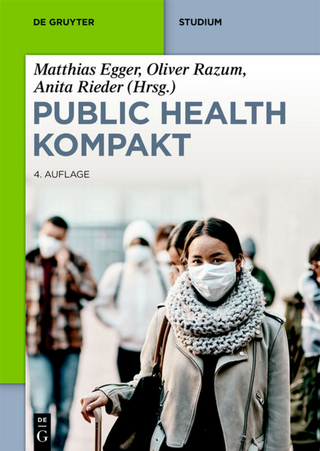
Epidemiology in Medical Practice
Churchill Livingstone (Verlag)
978-0-443-05620-8 (ISBN)
- Titel ist leider vergriffen;
keine Neuauflage - Artikel merken
Epidemiology is the study of the distribution and causation of disease in human populations. It has always been part of the curriculum for medical students, but not ranked highly by them in terms of interest or importance. However, recent GMC recommendations for change in the UK medical curricula include an increase in emphasis in the study of epidemiology and public health medicine, so the subject is likely to take higher priority in the future. This new edition of one of the best known student textbooks of epidemiology has been updated and includes new material while still offering concise coverage of the core knowledge required by the student.
SECTION 1 DESCRIPTION of DISEASE in the COMMUNITY: Community Diagnosis: National Problems, Regional Problems, Time Trends, High Risk Groups, Defining Priorities. Sources of Information: Routine Statistics: Population Statistics, Mortality Statistics (General and Occupational), Morbidity Statistics (Hospital, General Practice, Notifications, Registers, Social Security and Other Sources), Record Linkage, References to Available Sources. Sources of Information: Surveys: Case Definition, Quality Control (Repeatability, Validity), Types of Survey (Simple Descriptive Surveys, Cross-Sectional and Longitudinal Population Surveys). Methods of Description: Numbers and Rates, Prevalence and Incidence, Geographical Distributions (Including Age/Sex Standardization of Rates), Distributions in Time (Secular and Cyclic Trends), Characteristics of Individuals (Age, Sex Socio-Economic Status, Occupation), Indicators SECTION 2 PREVENTION of DISEASE: Aetiology: Descriptive Studies (Geographical, Temporal and Age Distribution), Analytic Studies (Case Control and Cohort Studies, Execution of Studies, Selection of Controls, Interpretation of Data, Correlation, Significance Tests, Interactionof Causes), Causes of Disease in Populations and Individuals, Preventive Strategies for Evaluating Treatment SECTION 3 EPIDEMIOLOGY and PATIENT CARE: Natural History and Prognosis: Limitations of Clinical Experience (Case Selection and Incomplete Follow-Up), the Clinical Follow-Up Study (Case Definition and Ascertainment, Pilot Study, Record Design, Follow-Up), Methods of Describing Prognosis (Case Fatality Rate, Survival Rates, Life-Table Analysis), Record Linkage, the Precursorand Preclinical Phases of Disease. Screening: Screening in Clinical Practice, Mass Screening Surveys, Assessment of Screening Test (Repeatability, Validity), Evaluation of a Screening Service (Costs, Yield, Policy Decisions). Epidemics:Infectious Disease Epidemics, Epidemics of Non -Infectious Disease, Investigation of Epidemics (Verification of Diagnosis, Confirmation of Epidemic, Characterization of Cases, Investigation of Population at Risk, Formulation of Hypothesis), Management of Epidemics (Treatment of Cases, Control Measures, Surveillance). Epidemiology in the Planning and Evaluation of Medical Services: Need, Demand, Outcome and Planning, Cost, Efficiency, Observational Studies, Experimental Studies, Critical Appraisal of Epidemiological Studies (Bias, Chance, Confounding Versus Causality), Conclusion
| Erscheint lt. Verlag | 15.2.1998 |
|---|---|
| Zusatzinfo | black & white illustrations |
| Verlagsort | London |
| Sprache | englisch |
| Maße | 140 x 216 mm |
| Gewicht | 219 g |
| Themenwelt | Studium ► Querschnittsbereiche ► Epidemiologie / Med. Biometrie |
| ISBN-10 | 0-443-05620-X / 044305620X |
| ISBN-13 | 978-0-443-05620-8 / 9780443056208 |
| Zustand | Neuware |
| Haben Sie eine Frage zum Produkt? |
aus dem Bereich


